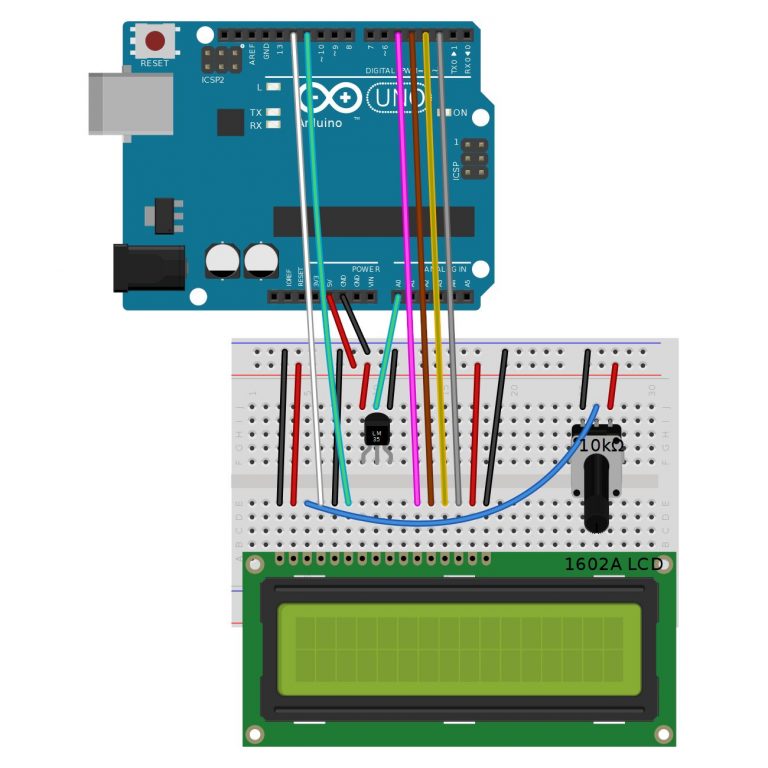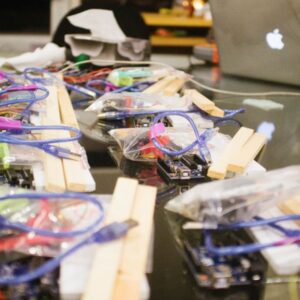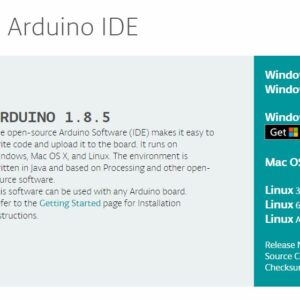A common Arduino Uno project, once a first-time user has moved on from flashing LEDs, is to interface one to the real world by reading from a sensor. And since temperature sensors are among the most readily available and easy to interface with, many people create Arduino thermometers and thermostats.
The simplest of these temperature sensors are three terminal chips which take a 5 volt power supply from the Arduino and return a voltage on their other terminal proportional to their temperature.
This can be connected to one of the Arduino’s analogue input pins and read using the Arduino’s analogRead() function for your code to calculate a reading from.
Since any measurement project including a thermometer is relatively useless without a display, you will also find a lot of Arduino projects featuring LCD displays.
The commonly available LCD displays using the venerable Hitachi HD44780 driver chip will interface directly with an Arduino, and can easily be controlled using the LiquidCrystal Arduino library. The example Arduino project above is wired to an HD44780 display and an LM35 three-terminal temperature sensor to make a complete thermometer project.
Image by Nevit Dilmen (CC-BY-SA)
Continue Reading Arduino Board Tutorial for Hackerspace Beginners





Nybble Cat Robot ...
Google Blockly Games Maze 6 Solution #Blockly #Javascript #Coding...
Smart Robot Car Kit DC Motors Installation #Robots #STEM #Makerspace...
Cross Curricular Lessons Motivate Children #Lessons #Coding #Teachers...
Arduino IDE Library Installed Successfully #Arduino...
Nybble Cat Robot ...